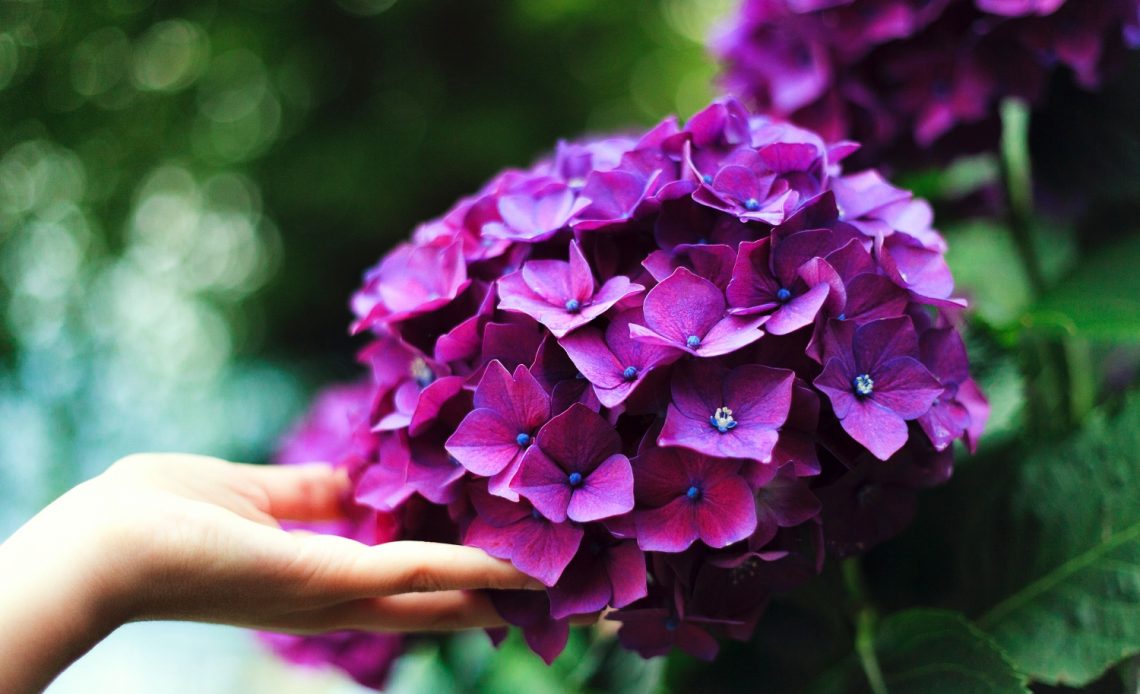

We’re here to help! Wild Yards is a completely free website that is 100% dedicated to helping you create a wildlife-friendly, sustainable yard. Read more
WildYards is reader-supported. When you buy a product through a link on our site, we may earn a comission. Every product is independently selected by our (obsessive) editors and our reviews are unbiased and objective. Read more about our mission or our privacy policy.
The hydrangea is one flower that’s easy to fall in love with. Their colors run the gamut from delicate pastels to vibrant hues, and their large flower heads are impossible to ignore. Whether you’re looking for a backdrop for the other flowers in your landscaping or a focal point to catch the eye, hydrangeas will suit your garden’s needs. Overall, hydrangeas are easy to care for. Just meet all of their growing requirements, and they’ll thrive! But if you notice your hydrangea leaves turning brown, the plant may require some extra attention.
Hydrangea leaves often turn brown when the plant is underwatered, however, overwatering can have the same effect. Insect infestations, diseases, and chemical burns, either from pesticides or fertilizers, can also lead to brown leaves in hydrangeas.
13 Reasons why hydrangea leaves turn brown and solutions that actually work
Hydrangeas are pretty easy to take care of. As long as you meet their growing requirements, you shouldn’t run into too many issues. The problem is that sometimes meeting their growing requirements is easier said than done. If over time, the plants start getting too much sunlight or too much water, or if their soil conditions shift to a less-than-ideal state, your hydrangeas will let you know right away. Hydrangeas can be a bit dramatic. But, that makes it easier to determine when something is out of whack. If your hydrangea leaves are turning brown, it’s probably due to one of the following reasons. By utilizing the appropriate solution, you can restore your hydrangea’s health quickly.
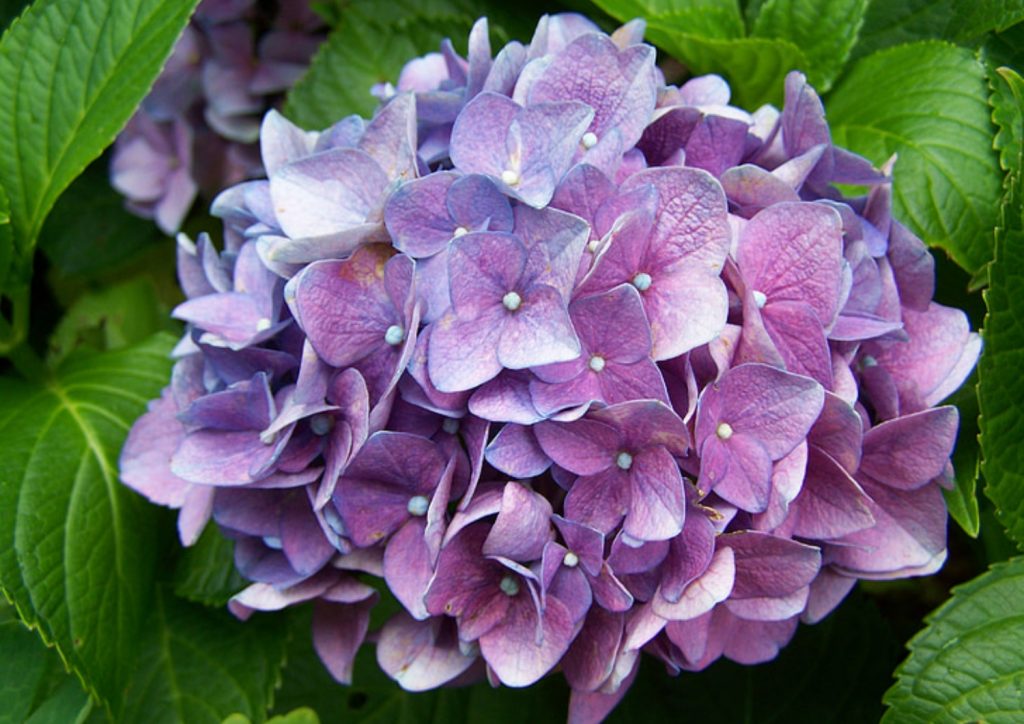
The problem: underwatering
The word “hydrangea” comes from the Latin hydro meaning “water” and angeion meaning “vessel”. As its name would have you believe, hydrangeas like plenty of water. They grow best in loose, loamy soil that’s packed with decaying organic materials. This naturally occurring compost doesn’t just keep the hydrangeas fed, it also helps the soil retain some moisture. But if the soil dries out, either because of a regional drought or because somebody forgot to water them, then the leaves of the hydrangea will wilt. If they go too long without water, the leaves will curl and turn brown. If your hydrangea plant’s leaves are suddenly crunchy and crumbling off, underwatering should be your first thought.
The solution: water more frequently
Stick your finger about 3 inches into the soil surrounding your hydrangeas. If it feels dry and powdery, your hydrangeas are thirsty, so give them a drink! The rule of thumb for hydrangeas is to water them three times a week, ideally in the morning, and to only water the very base of the plant to avoid getting the foliage wet (more on that in a minute). If you live in an especially hot climate, you may find your hydrangeas need to be watered every other day. Always check the soil before watering your hydrangeas, and remember, a few deep waterings are much better than smaller drinks. Once your hydrangeas get their fill of water, they should perk up quickly.
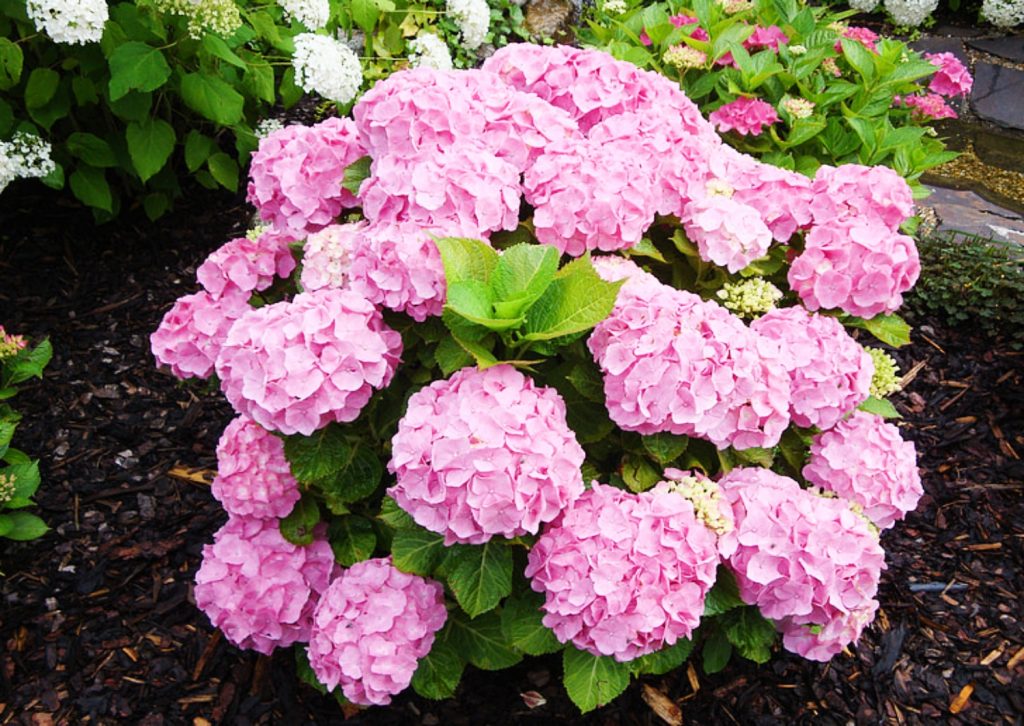
The problem: overwatering
Underwatering can causes plants to dry out and makes their leaves turn brown. But overwatering, counterintuitive as it may sound, can cause similar effects. If your hydrangea’s leaves are turning yellow and brown, but their soil feels damp, or even soggy, then overwatering is likely the source of its woes. Often, simply getting too much rain is enough to cause a hydrangea’s leaves to turn brown. But leaving the hose on too long can lead to brown foliage, too. And, sometimes, it’s not necessarily that the plant has gotten too much water, but rather that the soil it’s planted in doesn’t allow excess water to drain off. The water builds up, the soil gets muddy, and, bingo — your hydrangea’s leaves turn brown.
The solution: scale back on watering
The first thing you need to do if your hydrangea is getting too much water is to stop watering it. Second, assess the site’s drainage. Is your hydrangea planted in a low spot that stays muddy for days after rain? Or is it planted in a pot with no drainage holes in the bottom? Take a few measures to improve drainage. If your hydrangeas are planted in the ground, consider moving them to higher ground. If that’s not an option, then dig a small ditch for water to escape and amend the soil with gravel, coarse sand, and compost to make it more porous. Amending the soil will also help potted hydrangeas, and be sure to drill some holes in the bottom of their pots so water can escape quickly.
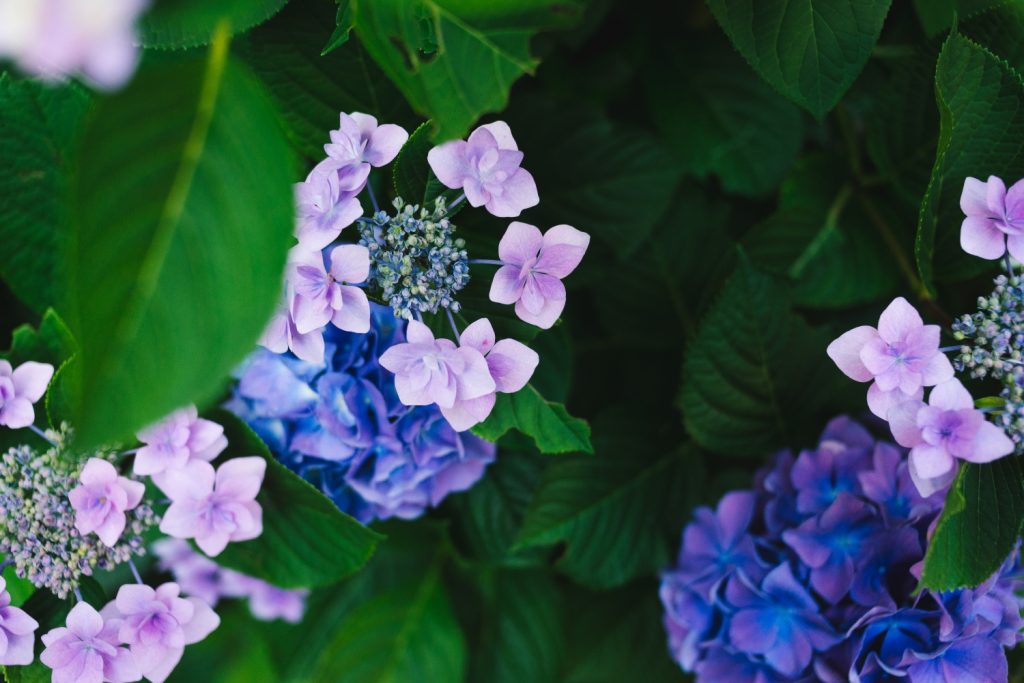
The problem: overhead watering
Hydrangeas have densely-packed foliage, meaning there isn’t much room for air to circulate within the shrub itself. If the plant’s leaves get wet, they won’t dry out quickly. And the longer the moisture stays on the foliage, the more likely the hydrangea is to develop mildew or fungus. Once that happens, the leaves will turn brown and yellow and fall off. When hydrangeas suffer from diseases as a consequence of overhead watering, the bottommost leaves of the plant are most likely to be impacted. As the water settles to the bottom of the plant, the foliage becomes infected by spores, and the leaves turn brown and die off.
The solution: water the base of the plant
To avoid this problem, simply water the base of the plant. Use a soaker hose to water your hydrangea hedges, and a watering can to help keep the water at the base of potted plants. Pruning the plant to remove extra branches makes it easier for air to circulate, and can further help prevent fungal infections associated with overhead watering. Note: if your hydrangeas are planted in the ground and get rained on, don’t worry. Just be sure to prune the plant regularly to promote air circulation, and avoid getting any more water on the foliage when you give them a drink.
The problem: too much wind
Like lavender, hydrangeas make a nice hedge, but they should never be used as a windbreak. Too much wind damages the plant’s foliage, and they’ll let you know they’re not happy when their leaves turn brown and fall off. When a hydrangea plant’s leaves turn brown due to excessive wind damage, then you’ll notice the leaves are most affected on the side that takes the brunt of the wind — usually the north or south side of the plant. The plant’s flower heads may also fade and turn brown, and the plant’s overall growth may slow significantly.
The solution: shelter the plants
Hydrangeas are often grown up against houses, sheds, and other structures. That’s because these buildings provide the plants with some protection from the elements. Of course, you don’t have to plant your hydrangea right up along a building. You can use them to line walkways, to accent flower beds, and more. Just be sure that the location you pick for your hydrangea is out of the winter. Hydrangeas can tolerate a small breeze — in fact, they rely upon gentle air circulation to keep diseases at bay. But if your hydrangea’s leaves are turning brown due to windy conditions, you’ll need to move the plant to a still spot as soon as possible. Only then will the plant’s foliage improve.
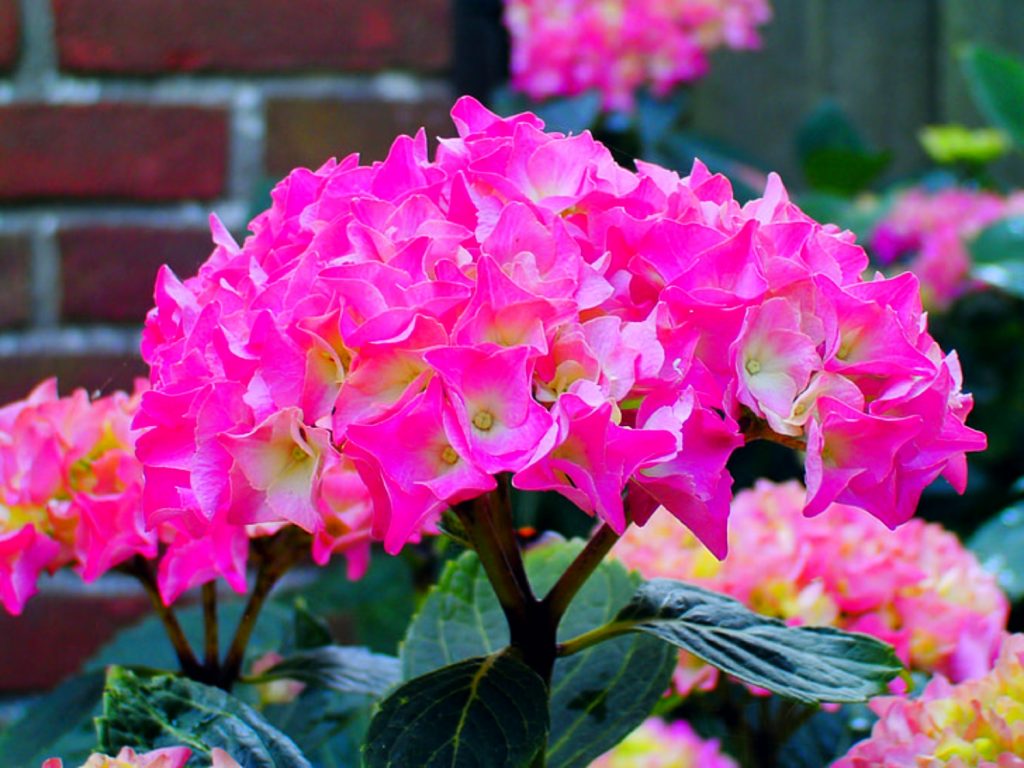
The problem: too much sunlight
Hydrangeas don’t really like full sun. They can tolerate morning sun, but they grow best when planted in a location where they can receive dappled shade all day long. If your hydrangeas are getting 6 or more hours of direct sunlight every day, they’re likely getting too hot in the afternoons. They may be able to tolerate this for a few days, but pretty soon, the plants will wilt, and they’ll keep wilting no matter how much you water them. After a time, their leaves will turn yellow and brown and fall off. The leaves that do remain green will become faded and withered. These are all signs that your hydrangea plant is getting much too much sun.
The solution: move the hydrangeas to the shade
Hydrangeas that show signs of sun damage should be moved to a shadier location as quickly as possible. Their condition won’t improve until things cool down. Try transplanting your hydrangeas to the east side of your home or a tree. That way, they’ll get enough sun in the morning and stay out of direct light in the afternoon. If your hydrangeas are potted, then simply move them up onto your deck or porch during the afternoon hours. Once your hydrangeas are able to cool off, their foliage will green up again.
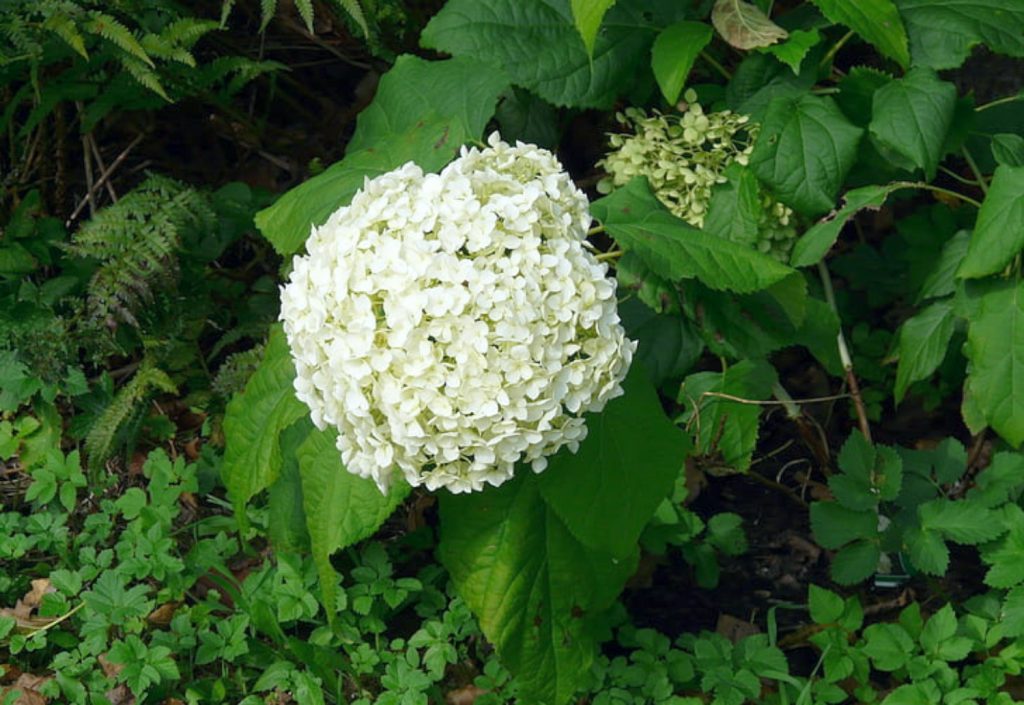
The problem: too much shade
Hydrangeas like filtered light best, but too much shade can also cause their leaves to change color, albeit for different reasons. When hydrangeas don’t get enough sunlight, they can’t photosynthesize the way they should. As a result, their leaves begin to lose their color, turning pale green, yellow, and brown. If your hydrangea’s leaves are turning brown, keep an eye on it throughout the day to observe how much sunlight it receives. If your hydrangea gets less than 4 hours of the morning sun or less than 6 hours of dappled sunlight, then it’s getting far too much shade to stay healthy.
The solution: move the hydrangeas to a sunny location
If your hydrangea is getting too much shade, then simply trimming neighboring trees may be all you need to do to help the shrub get the filtered sunlight it needs to thrive. But if no amount of tree trimming will improve light conditions, then it’s time to transplant your hydrangea to a new location. Choose a spot in your yard that gets 4 hours of the morning sun or 6 or more hours of dappled sunlight. Once your hydrangea can get enough sun, it will photosynthesize properly and sprout vibrant green new leaves.
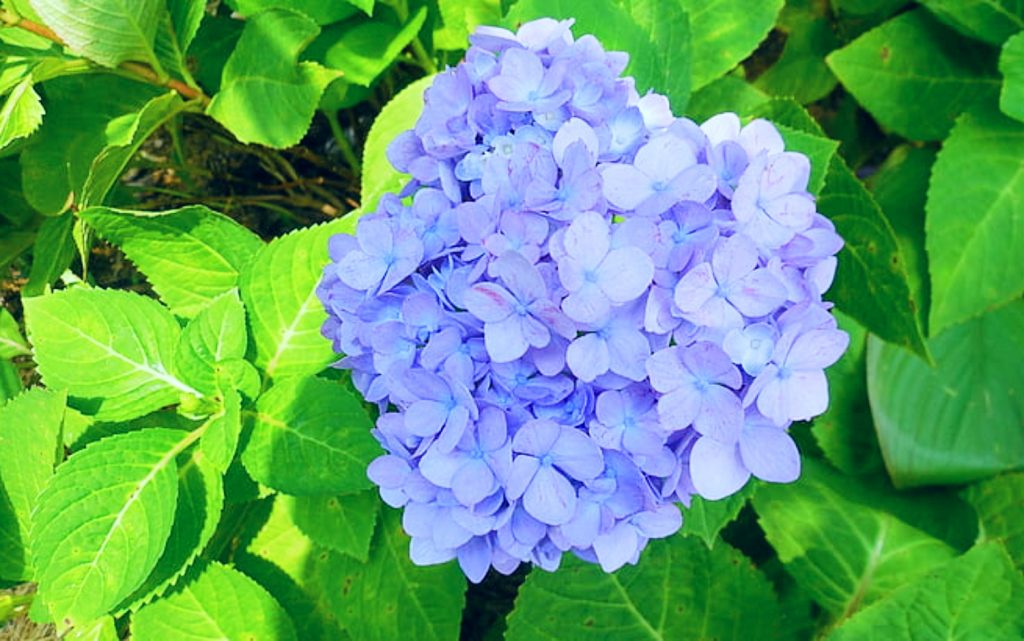
The problem: transplant shock
Sometimes transplanting is unavoidable. Maybe your hydrangea wasn’t getting enough sunlight in its old location, or maybe the ground was far too wet for it in its previous spot. In cases like these, transplanting your hydrangea is for the best. But, to make matters even more complicated, the act of transplanting your hydrangea in and of itself can cause the plant’s leaves to turn brown. This means if you moved your hydrangea because its leaves were brown, then its leaves may stay brown thanks to transplant shock. So, what can you do to help in this situation?
The solution: supportive care and patience
To maximize your plant’s chances of success during the transplanting process, follow our guide to transplanting. Choose the appropriate location for your plant’s needs, amend the soil to suit its requirements, dig a hole twice as large and as deep as the plant’s roots, and water the plant well afterward. Transplant shock can occur for a number of reasons, but the number one contributor to this condition is lack of water. Keep the soil uniformly moist for two weeks after transplanting. Providing supportive care will help your hydrangea produce healthy green foliage in the future.
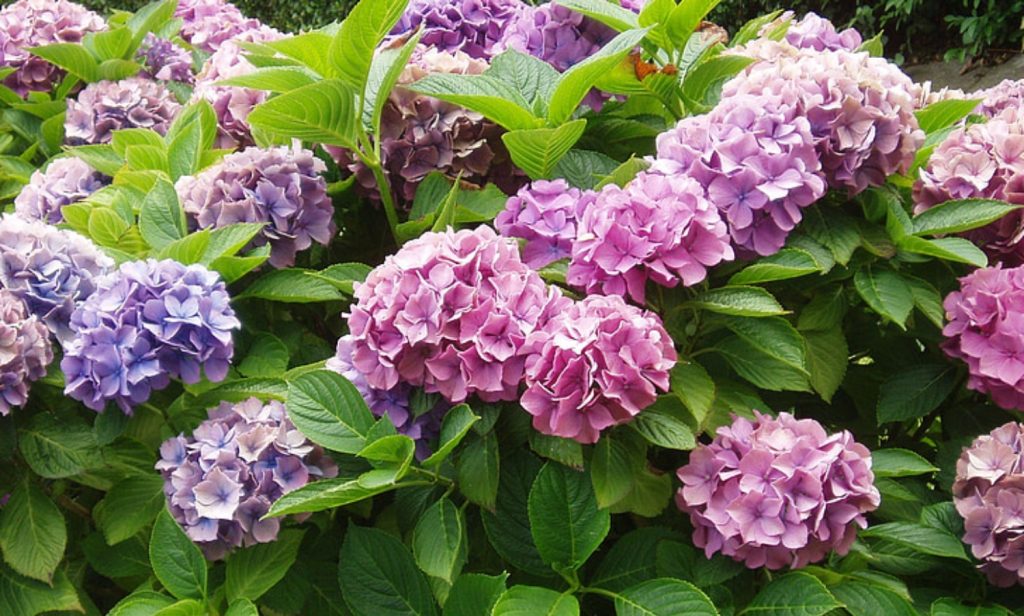
The problem: too much fertilizer
Hydrangeas are heavy feeders, and they require even more nutrients during their blooming period. A rookie mistake when it comes to growing hydrangeas is feeding the plants too often. Even though your intentions were good (after all, you just wanted to make sure your hydrangeas had enough minerals to bloom!), if the plants get too much fertilizer, the excess nitrogen can burn their leaves. If your hydrangea’s leaves turned yellow and brown along the edges after you fed them, then you probably fed them too much.
The solution: test the soil before feeding the hydrangeas
Hydrangeas need plenty of vitamins and minerals to grow. But too much of a good thing can act like poison. Testing the soil before fertilizing will help you determine if you need to feed the plants at all. To help your hydrangeas have a healthy blooming period, fertilize them with a slow-release general-purpose tree and shrub fertilizer in spring and once again in fall to prepare them for the next growing season.
The problem: wrong soil pH
Hydrangeas are notoriously sensitive to soil pH, which isn’t necessarily a bad thing. After all, it’s the soil pH that allows gardeners to change the colors of their hydrangea’s flower heads. Acidic soils with a pH of around 6.0 produce blue hydrangeas, whereas soils that are more neutral in nature, with a pH of 7.0, produce pink hydrangeas. As the soil becomes more alkaline, pink hydrangeas take on redder hues. While it can be fun playing around with the soil pH to alter your hydrangea’s color, beware. The wrong pH for the plant can result in poor nutrient absorption and, consequently, yellow and brown leaves.
The solution: balance the soil
When attempting to adjust your hydrangea’s color, keep the variety in mind. For instance, if you’re growing a blue hydrangea cultivar, like “Nikko Blue” hydrangea, then the plant may not tolerate it if you make the soil too alkaline. Instead of the flowers turning red, the plant may stop producing blooms and its leaves may turn brown. If you want blue, purple, pink, or red hydrangeas, choose the appropriate cultivar. And test the soil regularly so you can keep it at the right pH level. Add things like lime and wood ash to make the soil more alkaline, and peat moss to make the soil more acidic.
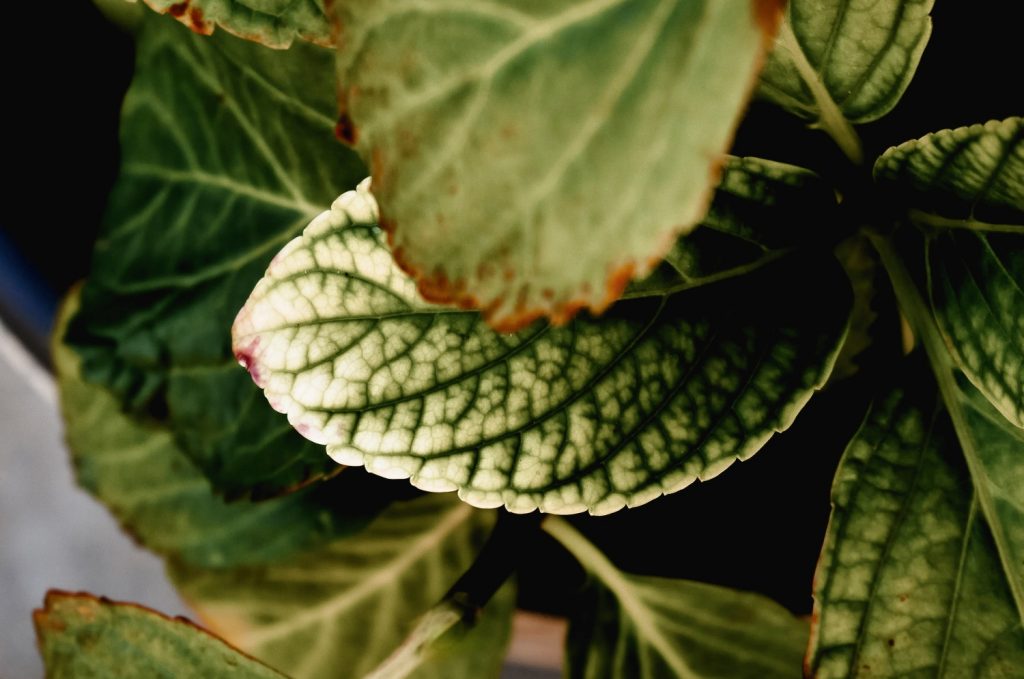
The problem: late spring frost
Hydrangeas perform best in temperate climes with little variation. A frost late in the spring season can catch your hydrangeas off guard. Not only will a hard late spring frost cause the plant’s leaves to turn brown, but it may also prevent the hydrangea’s buds from opening. This can have devastating effects on the plant for the season.
The solution: protect the hydrangeas from the cold
Once your hydrangeas start showing signs of life in the spring, keep a careful eye on the weather report. If you detect a late-season frost, grab a packing blanket or tarp and cover your plants to prevent freeze damage. While a late spring frost isn’t likely to kill your hydrangea (depending on the plant’s size and overall health), it can certainly be a setback. Fortunately, by simply keeping the plants warm, you can prevent their foliage from turning brown.
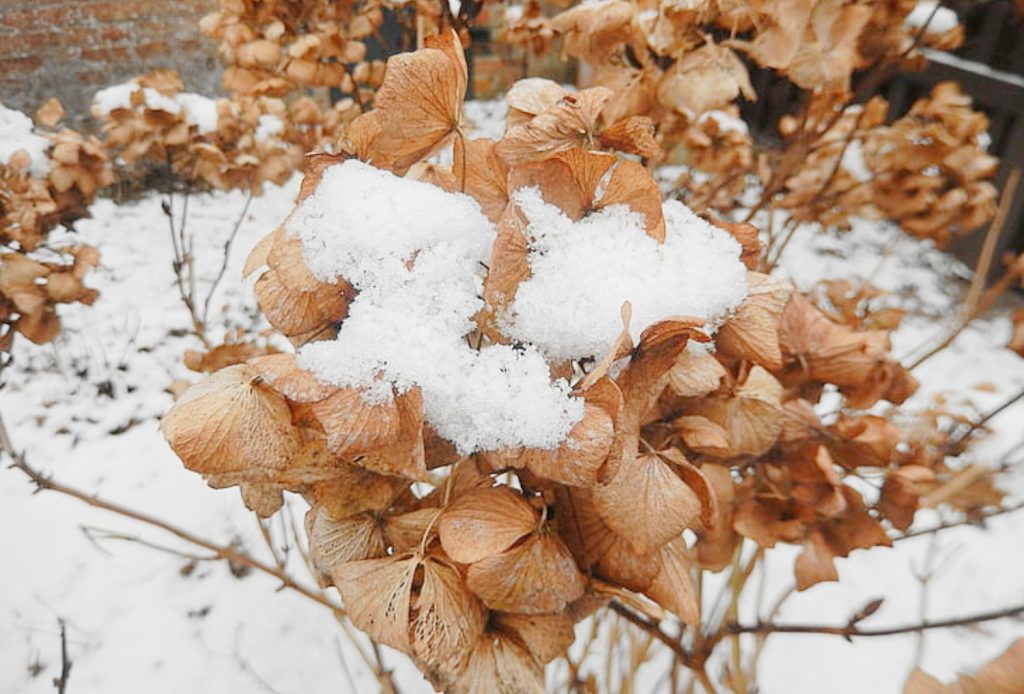
The problem: fungal infections
Maybe your hydrangea’s leaves aren’t turning uniformly brown. Maybe, instead, you’re noticing brown spots speckled across the plant’s foliage. If this is the case, then you’re probably looking at a fungal infection. Underwatering, overwatering, insufficient sunlight, and poor air circulation can all increase your hydrangea’s chances of developing a fungal disease. Look for pale green or yellow leaves with brown spots. Over time, the plant’s foliage may become deformed and stunted, too.
The solution: pruning and fungicide
It’s not unusual to see a few brown fungus spots on a healthy hydrangea. But, because the hydrangea is healthy, it can fight off a serious infection. If a significant portion of your hydrangea’s leaves is developing brown spots, it needs your help to regain its health. Start by pruning off affected branches. Be sure to throw the infected foliage in the garbage, so you don’t risk spreading the disease. Once you’re finished, spray the plant with a fungicide to kill any spores that were left behind. Taking measures to improve drainage, light conditions, and airflow around the plant will help prevent a relapse. Regular deadheading and annual prunings can further help prevent fungal diseases in hydrangeas.
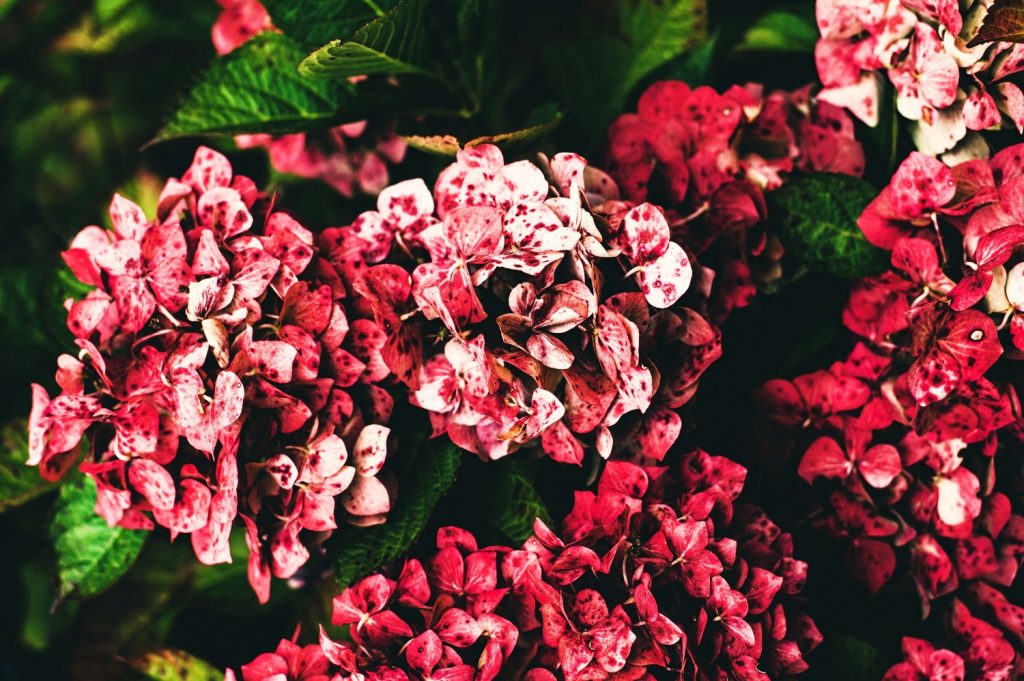
The problem: insect infestation
Hydrangeas have leathery foliage, so because they’re hard to chew, they’re not a bug’s first choice of a meal. But, that said, hydrangeas can still fall prey to insect infestations. If your hydrangea’s leaves are turning yellow and brown, particularly if you notice the leaf edges have been eaten away, then there’s a good chance bugs are causing the plant’s decline in appearance. Inspect the hydrangea’s foliage carefully for bugs. Aphids, beetles, slugs, spider mites, and whiteflies are among the most likely to prey on your hydrangeas. If you see little creepy crawlies hanging out on the undersides of your hydrangea’s leaves, you need to act quickly.
The solution: apply an insecticide
If there are just a few bugs here and there, then you can remove them by hand or spray the hydrangea off with the garden hose to physically repel the insects. But if the infestation is severe, you’ll need to apply an insecticide to kill off all the harmful bugs. Purchase a chemical insecticide from your local nursery, or whip up one of our 9 homemade insecticide recipes to use instead. Once you get a handle on the bug situation, your hydrangea’s leaves will become healthy and green again.
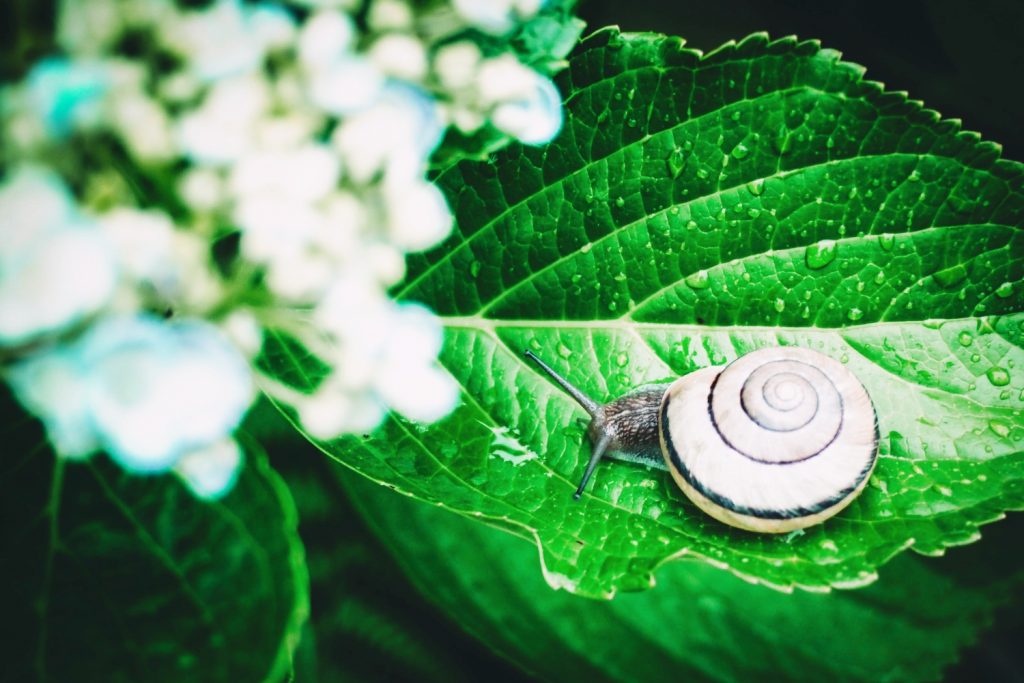
The problem: chemical contact
Sometimes you have to spray your plants with chemicals. Fungicides, herbicides, and insecticides can be a necessary evil when you’re struggling with fungi, weeds, and bugs. But if you accidentally spray too much of one of these substances onto your hydrangeas, the leaves may react by turning brown. Sometimes, even spraying neighboring plants can cause the hydrangea’s leaves to turn brown if even just a hint of the chemicals comes into contact with their foliage.
The solution: cover the hydrangeas before spraying their neighbors
Be sure to cover your hydrangea’s leaves with plastic before spraying neighboring plants with chemicals. Additionally, you should read the instructions before applying any chemical-based substance to your plants to ensure you apply them correctly. Always err on the side of under-applying these substances, as overapplying them can result in brown foliage.
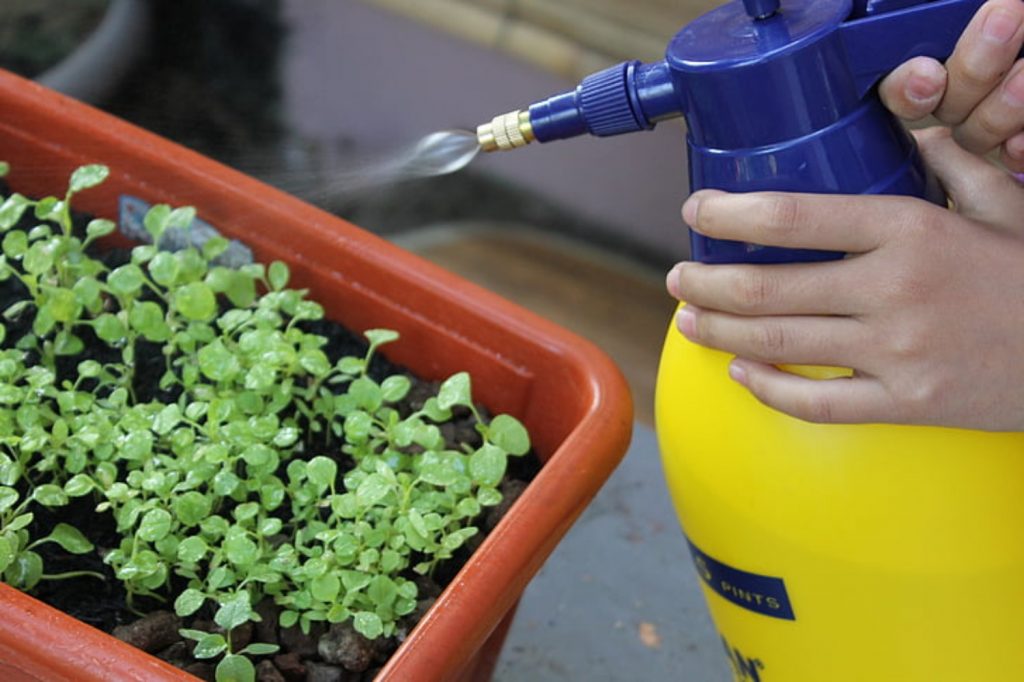
Will your hydrangea’s brown leaves turn green again?
Once a plant’s leaves have turned brown, they’ve died, and they won’t turn green again. If some part of the leaf retains its original green color, then the leaf can still be used to produce food for the plant. The greater the portion of green on a leaf, the more useful it is to the plant. So, even though the brown section of a leaf may not come back to life, the rest of the leaf can still serve a purpose.
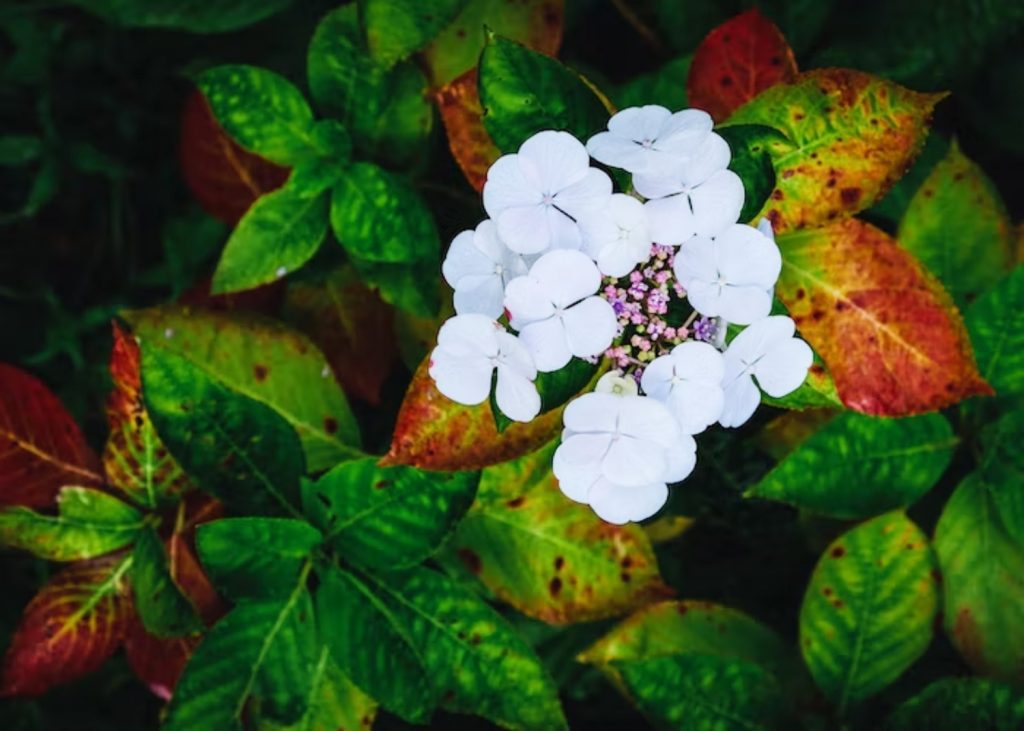
Should you prune your hydrangea’s brown leaves?
The answer to this question depends on the plant’s health. If your hydrangea is mostly green with just a handful of brown leaves, then it’s safe to pull the dead ones off. But if your hydrangea is struggling with some health issues, and 50% or more of its foliage is brown, then only remove the leaves that are 100% dead. Leaves that have retained some green color should be allowed to remain on the plant. Sick plants rely on their green foliage for photosynthesis. Removing these leaves from a sick plant could prevent it from recovering.
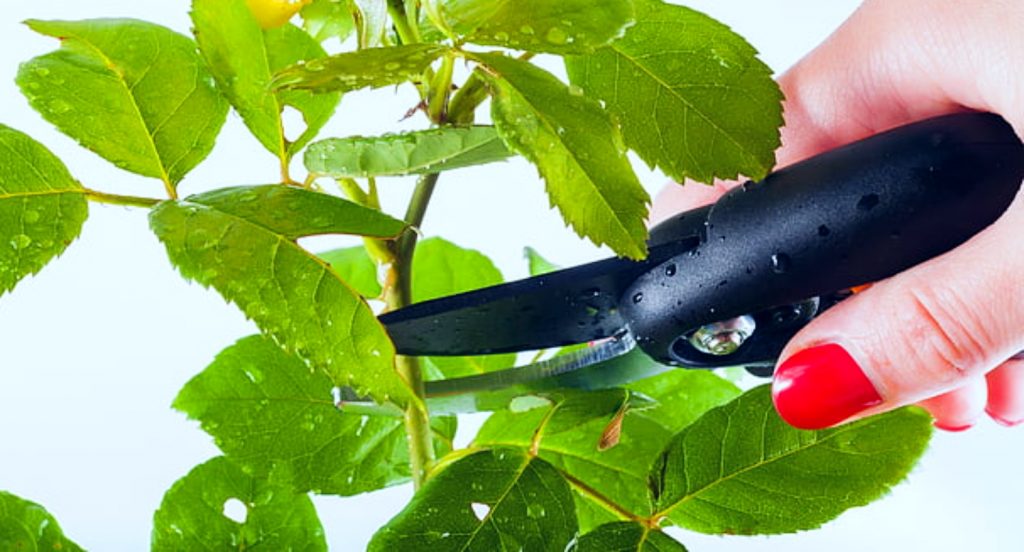
More tips for preventing hydrangea leaves from turning brown
Plant your hydrangeas in a location where they can receive morning sunlight and afternoon shade or 6 hours of dappled sunlight. For potted hydrangeas, use an all-purpose potting soil mixture, and, if planting your hydrangeas in the ground, be sure to amend native soils with sand and compost to improve their texture. Keep the soil at an appropriate pH for the variety of hydrangea you wish to grow. And don’t forget to water and fertilize the plant regularly (but not too often!)
Meeting all of your hydrangea’s growing requirements is the best way to prevent the leaves from turning brown.
